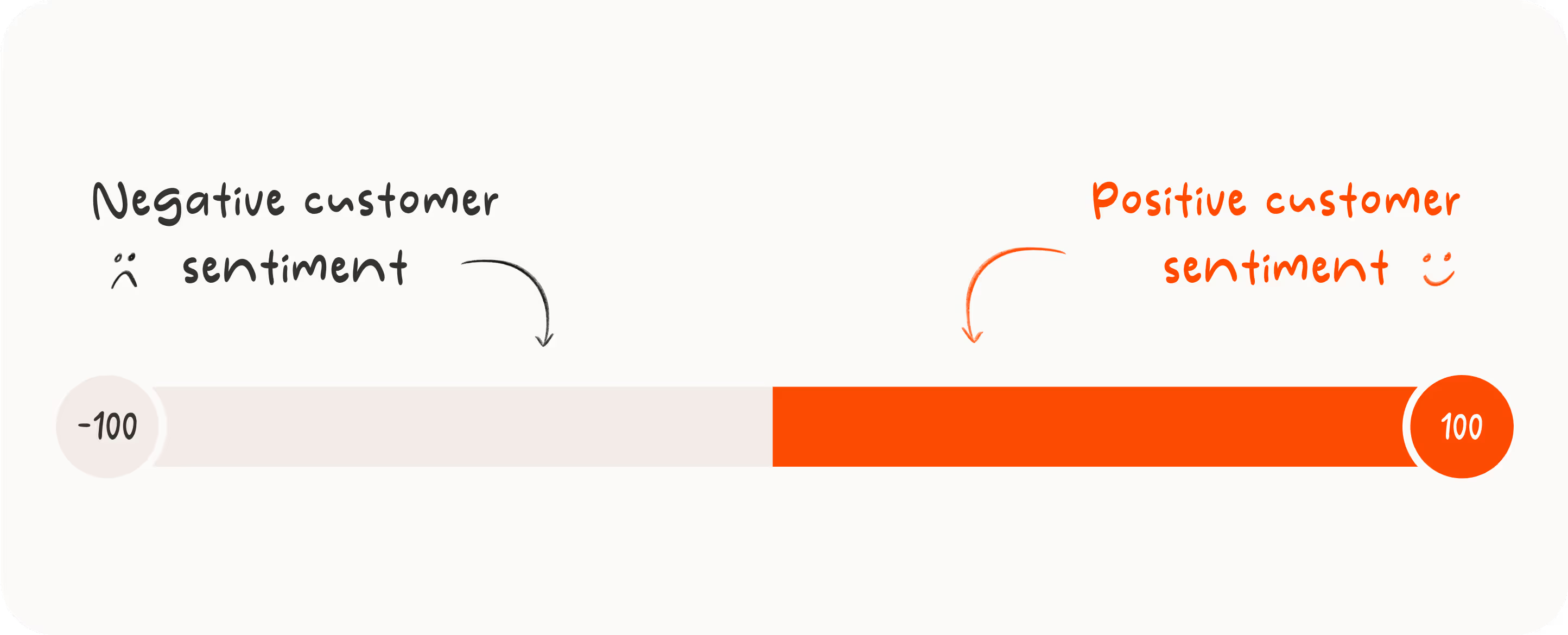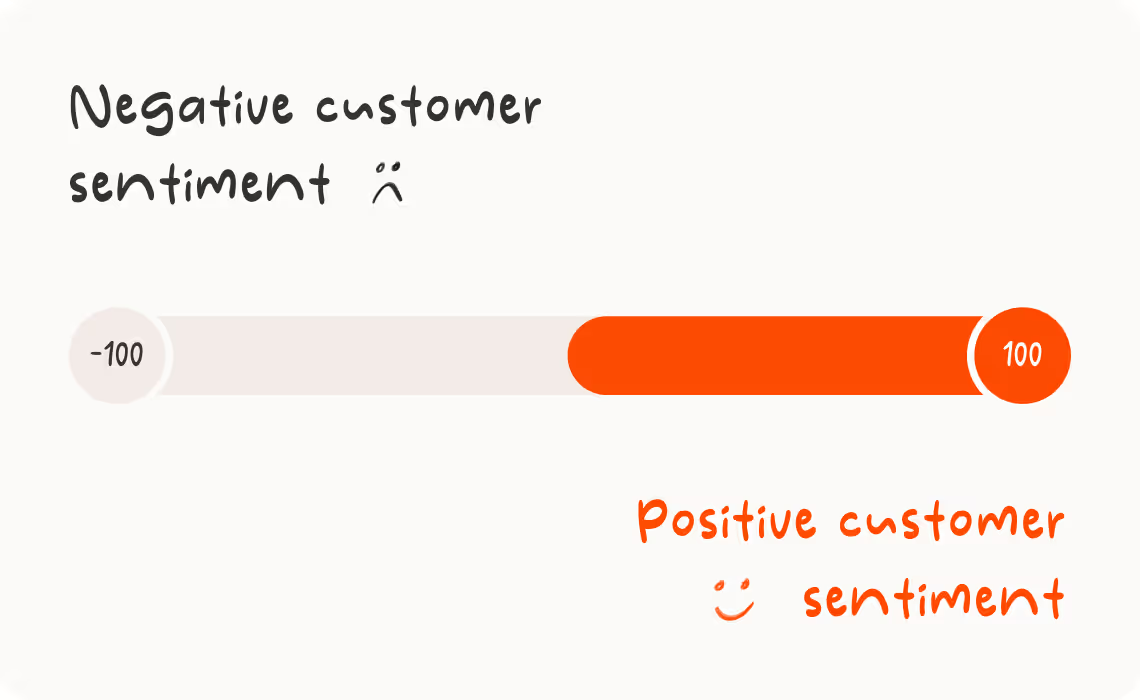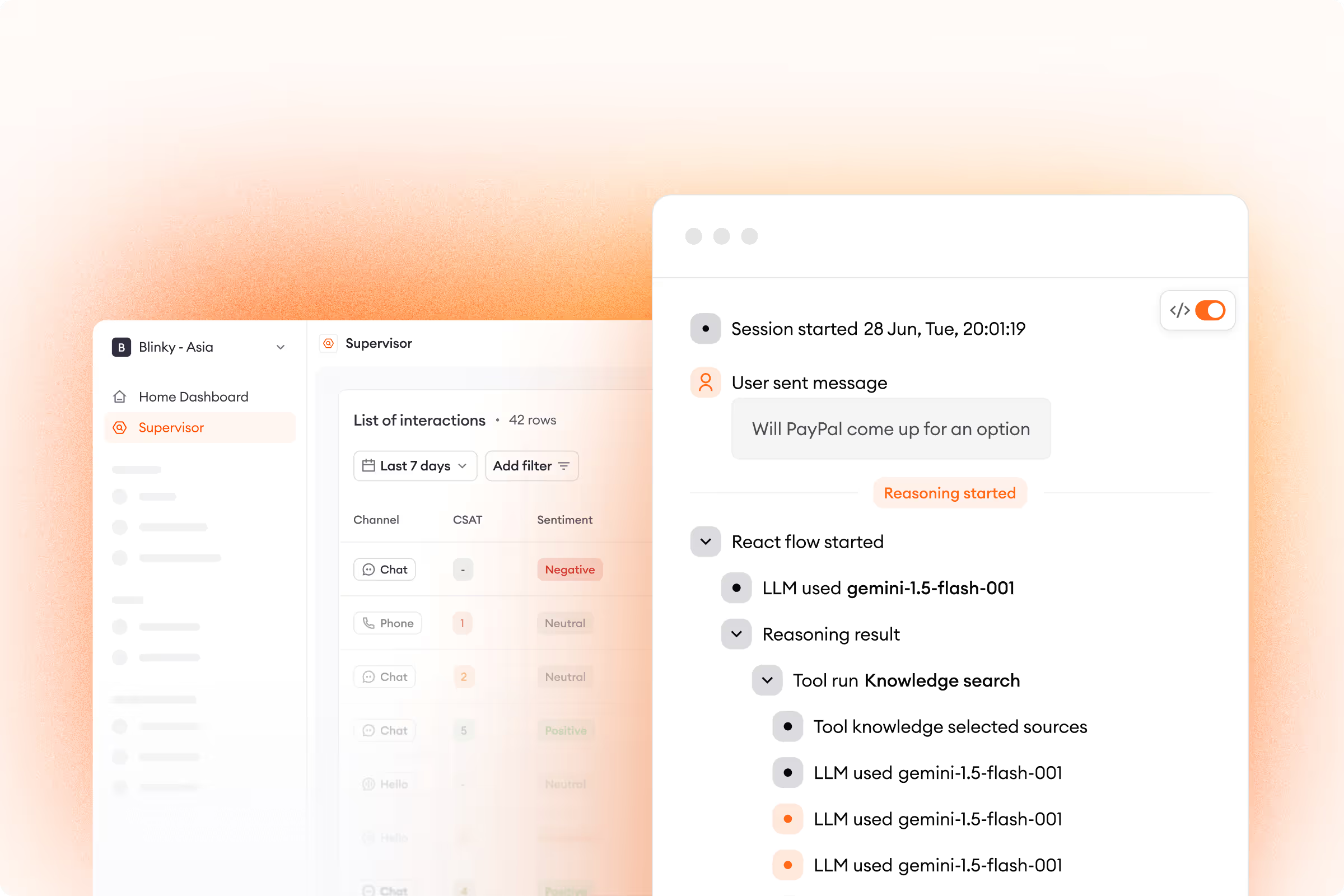We’ve all known a bull in a china shop — someone who carelessly steamrolls through a situation, unwilling to listen to constructive criticism from those around them.
Sadly, many businesses aren’t any different, doing as they please and ignoring feedback from those who matter most — customers. 39% of companies fail to regularly ask for customer feedback, and worse still — 79% of shoppers who share complaints online had their comments ignored.
Even more tragic is the fact that when businesses neglect customer feedback, they’re only hurting themselves. To fix this cycle, businesses need to pay attention to customer sentiment. Tracking this metric will yield a treasure trove of rewards for any company open to hearing what their shoppers have to say.
What is customer sentiment, and why is it so important? Find out why it might be the most vital customer service metric you’ve been ignoring.
What is customer sentiment?
Customer sentiment is a metric companies use to understand how shoppers feel about their brand. Also known as user sentiment, it reflects how satisfied or frustrated customers are with your products, services, or company as a whole. Customer sentiment can come from a wide range of sources — from direct feedback all the way to comments posted on review sites — and can be positive, negative, or neutral.
For instance, a support ticket in which a chatbot helps the customer through checkout to fully resolve their issue — and adds a discount code to boot — highlights positive customer sentiment.
On the other hand, whenever a company’s social media pages get flooded with complaints due to bad experiences — think faulty products or delayed shipping — they’re handling negative customer sentiment.

What is customer sentiment analysis?
Customer sentiment analysis is the systematic process of measuring customer opinions and using customer feedback as the basis for data-driven decisions. In other words, customer sentiment is an indication of how users feel towards a brand, and customer sentiment analysis is the process in which a company collects and processes this data.
For businesses, AI-powered automation technology is crucial to get an accurate customer sentiment analysis. Customer service teams need to collect feedback from diverse touchpoints, and scanning this customer data manually can get overwhelming — fast.
Instead, companies should implement sentiment analysis tools to streamline the entire process. Backed by powerful algorithms, automation solutions employ machine learning to ask customers to share their thoughts, analyze their input, and recommend future actions.
.avif)
How do you measure customer sentiment?
Customer sentiment is measured with a customer sentiment score.
A customer sentiment score is a number that reflects a customer’s overall feelings toward your brand. While different versions exist, the simplest scoring metric ranges from -100 to +100. Specific words a customer uses in their feedback can be assigned different values: positive words are assigned +1, while negative words are given -1.

Once you get a customer’s complete picture, it’s easier to gauge their sentiment. Higher scores indicate positive sentiment, and lower scores are a sign of negative sentiment.
The math is simple enough, but manually scanning thousands of conversations to measure customer sentiment scores for all of your shoppers can be incredibly challenging. That said, automation solutions make this task much more manageable. AI-powered platforms handle the bulk of the work and can swiftly provide scores for each customer as well as average scores for your brand.
These tools also give companies more than just a quantitative score. AI solutions read what customers say and deliver teams actionable insights into what’s working and what isn’t.
7 benefits of customer sentiment analysis
Embracing a routine of customer sentiment analysis enables businesses to do the following:
1. Get to the root of problems
Companies that don’t actively listen to customers essentially have to take a shot in the dark any time they try to introduce improvements.
Businesses that measure customer sentiment, however, can stay on top of users’ most pressing concerns. By hearing what customers are missing first-hand, it’s easier to implement changes to the customer experience that shoppers will actually notice — and appreciate.
2. Get closer to customers
Companies frequently say they wish they could form deeper customer relationships. Tracking customer sentiment is a powerful way to achieve this, thanks to its ability to tap into customers’ emotions and the voice of the customer (VOC).
Knowing your top customer needs has a profound impact on customer loyalty. 83% of customers are more loyal to brands that resolve their complaints. As loyalty rises, retention increases while churn falls.

3. Empower support agents
Equipping customer support reps with real-time sentiment data means they’re able to do much more than answer customer questions. When an agent knows a particular customer’s sentiment score, they’re able to offer personalized care that addresses that shopper’s unique case.
Rather than approaching each customer interaction with a blank slate, agents can see what’s bugging shoppers beforehand, making it easier to deliver more efficient service. Since agents can anticipate customer pain points, cases can get resolved faster, and more serious situations can be prevented altogether.
4. Improve customer satisfaction
Customer satisfaction (CSAT) scores and net promoter scores (NPS) are useful metrics for gauging how happy customers are, but they’re limited in scope. Both only offer businesses a number, whereas customer sentiment analysis takes things one step further by providing information that can actively help increase customer satisfaction.
For example, when shoppers repeatedly share statements like unclear shipping info or complicated checkout, it’s easy to find a remedy and leave more customers with a smile on their face.
Get a detailed look at CSAT, NPS, and other customer service metrics in our All About CSAT blog post.
5. Gain a competitive advantage
Remember — the majority of customers feel companies are dropping the ball when it comes to addressing their concerns. With thorough customer sentiment processes in place, your brand is poised to stand out from the pack as one of the few that actually cares about its shoppers.
Turn your customer service into a new marketing arm. If customers consistently walk away satisfied, more of them will promote your brand via positive word-of-mouth. 72% of customers share good experiences with others, and a well-managed sentiment analysis will give them something to talk about.
6. Manage crises proactively
What if one of your products is defective? Or your website is on the fritz, and customers can’t shop smoothly? Without sentiment analysis, you wouldn’t find out until you’re hit with a tidal wave of negative customer reviews. By the time you react, it might be too late to save your brand reputation, let alone your bottom line.
With sentiment analysis, though, you can take decisive proactive measures. As soon as the first complaints come trickling in, you’ll be alerted to any larger problems and can spring into action, repairing problems before any real damage is done.
7. Increase sales
Thanks to customer sentiment analysis, companies can grasp exactly what changes are needed to make their products better. Once shoppers see changes introduced, there’s a greater chance they’ll buy more.
There are a couple of factors at play here. Sure, customers are more likely to purchase improved items and leave glowing product reviews, but they’ll also trust your company more since you were willing to act on their feedback. They’ll be more excited about new products as well, driving sales revenue higher.
How to use customer sentiment to build a better customer experience
All of the above factors are linked to the notion that employing customer sentiment analysis can significantly boost your customer experience. And AI solutions lie at the heart of this transformation.
AI-powered automation tools bring companies closer to shoppers throughout the customer journey. Not only do these tools analyze sentiment, but they use natural language processing (NLP) to detect mood, buying intent, and tone to give agents a complete customer picture — before they even start interacting.
These customer insights let agents perform more efficiently, giving customers the help they need — and then some. Since agents can send personalized responses faster, it’s easier for them to go above and beyond customer expectations. And as AI customer sentiment analysis tools learn over time, they’ll allow companies to continuously improve upon the customer experience and reap greater dividends down the line.
Zowie is a leading AI customer service automation suite that empowers teams to leverage customer sentiment analysis to maximize efficiency and elevate the customer experience.

.avif)







